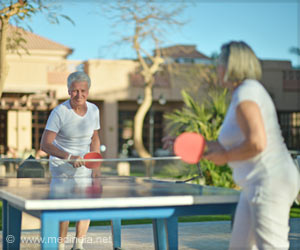- Argentine tango helps people with Parkinson's disease
- Dancing the tango accompanied by an enjoyable social environment and music can significantly improve Parkinson's disease symptoms
- Argentine tango may also allow Parkinson's patients to dance the fall risk away
Read More..
There is no cure, but there are ways to improve symptoms. Researchers from Florida State University suggest practicing the Argentine tango could provide useful relief.
In a study published in the Journal of the American Medical Directors Association, FSU researchers used gait analysis to measure the risk of falling for Parkinson’s patients before and after Argentine tango dance lessons. The patients who took a series of 12 classes had a significant reduction in fall risk compared to a control group.
One of the main obstacles for Parkinson’s patients is walking. They walk slower and with a shuffling gait, which increases their risk of falling. Because they cannot move as quickly, they are often unable to stop a fall with their hands and are at a significantly higher risk of injury than non-Parkinson’s patients.
“That is why fall prevention is key,” said Shani Peter, a third-year medical student and a member of the team that completed the project. “Argentine tango involves specific dance techniques that decrease fall risk and are generally not taught in other dances or activities. Our study further solidifies the potential Argentine tango has as a therapeutic and rehabilitative means for patients.”
The specific techniques of Argentine tango help explain why it is so beneficial to Parkinson’s patients, said Peter, who was president of the Argentine Tango Club when she was an undergraduate at Florida State University. The dance emphasizes walking, balance, posture and weight shifting, all of which happens alongside a partner. For example, a forward step is broken into three parts: hip lift, knee lift and a forward lean that incorporates the chest. That shifts the dancer’s weight from the back of their body to the front.
“To take a step in any direction may seem simple, but when you have Parkinson’s disease, the internal cue to take a step may dissipate,” Peter said.
“As you learn how to dance Argentine tango, not only are you taught how to take a step by analyzing your body movements from head to toe, but you are provided external cues to do so.”
A College of Medicine Summer Research Fellowship helped the research team complete its project. Each year, FSU medical students can apply for the fellowships to work with College of Medicine faculty on original research. Recipients present their work at a poster session alongside other research from physicians.
“This is a perfect example of why we encourage our medical students to explore research opportunities,” College of Medicine Dean John P. Fogarty said. “It makes them better physicians, and it can make life better for their patients.”
The research team is continuing their investigation. The intervention lasted for only a month, used a small group of patients who wanted to take tango lessons and included a control group that did not undergo any exercise regimen, which may have shown improvement on its own. A longer study incorporating core-strengthening exercises and a crossover between patient groups at six weeks is currently under way.
“Argentine tango involves unique techniques that address features that contribute to a Parkinson’s patient’s fall risk,” Peter said. “Our study reinforced the hypothesis that there is potential for physical rehabilitation in the dance. Accompanied by an enjoyable social environment and music, Argentine tango allows patients to dance the fall risk away.”
College of Medicine Professor Charles G. Maitland, Department of Scientific Computing graduate student Nathan Crock, as well as Beau J. Billings, Richard Wu, Shane Sterling, Sonia Koul, William F. Taber, Karina Pique and Roei Golan, all with the FSU College of Medicine, contributed to this study.
Reference:
- Let’s Dance: FSU researchers investigate how tango may help Parkinson’s patients - (https://news.fsu.edu/news/2020/03/11/lets-dance-fsu-researchers-investigate-how-tango-may-help-parkinsons-patients/)
Source-Newswise










